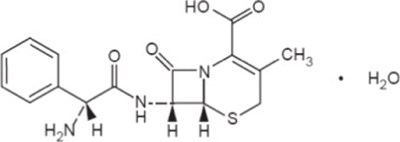Product Images Cephalexin
View Photos of Packaging, Labels & Appearance
Product Label Images
The following 3 images provide visual information about the product associated with Cephalexin NDC 61442-202 by Carlsbad Technology, Inc., such as packaging, labeling, and the appearance of the drug itself. This resource could be helpful for medical professionals, pharmacists, and patients seeking to verify medication information and ensure they have the correct product.
Principal Display Panel – Bottle Label – 100 mL - cep01 0003 02

This is a description of Cephalexin Monohydrate oral suspension for pediatric patients. The usual dose ranges from 25 to 50 mg per kg per day in four divided doses which may be doubled for severe infections. Each 5 mL of the pleasant-tasting mixture contains Cephalexin Monohydrate equivalent to 125 mg Cephalexin. The medicine must be stored prior to mixing at 20° to 25°C and should be mixed with 70 mL of water. The mixture should be shaken well before using. Once mixed, the medicine should be stored in a refrigerator and may be kept for 14 days without significant loss of potency. The product is manufactured by Yung Shin Pharmaceutical Ind. Co., Ltd, Tachia, Taichung 43769, TAIWAN and distributed by Carlsbad Technology, Inc.*
Principal Display Panel – Bottle Label – 100 mL - cep01 0003 03

This is a description of a medication called Cephalexin Monohydrate that comes in a dry form and requires mixing with water before use. It contains 5g of Cephalexin and is used to treat infections in pediatric patients. The usual dose is 50 mg per kg per day divided into four doses, which can be doubled for more severe cases. The text also provides instructions for mixing the medication and storing it at a controlled room temperature. Lot number and expiration date are also included.*
* The product label images have been analyzed using a combination of traditional computing and machine learning techniques. It should be noted that the descriptions provided may not be entirely accurate as they are experimental in nature. Use the information in this page at your own discretion and risk.
